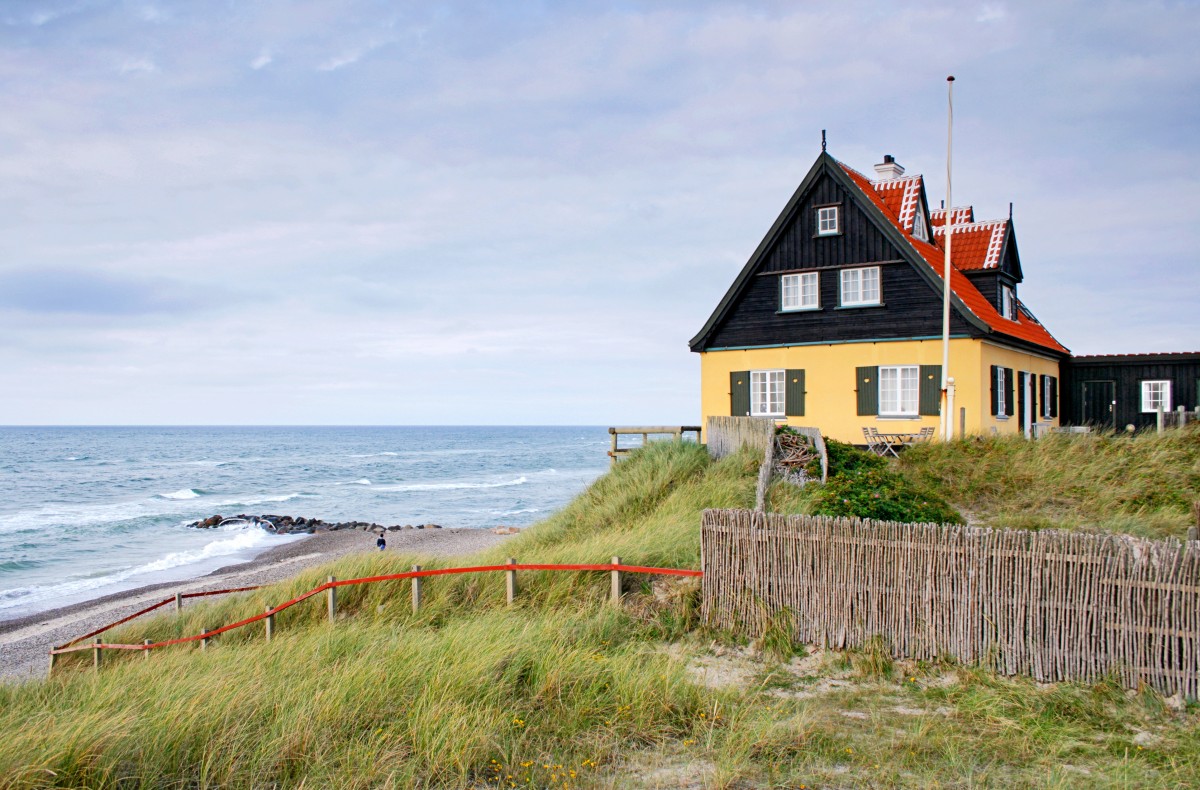In Denmark at any time of the year – this is something to consider when choosing a holiday home
Traveling to Denmark is only fun in the summer months!? Are you kidding me? Are you serious when you say that! The assumption that vacationers can only spend a nice time in the north in the summer months is de facto wrong. Especially those who decide to stay in a holiday home in Denmark have many opportunities to find a “seasonal” holiday home. What is important in spring, summer, autumn and winter is revealed in this article, which refers to a climate table that gives the values for the city of Copenhagen.
Spring in Denmark
The calendar spring begins on March 20th and ends in summer on June 21st. During this time, the weather in Denmark is varied: while the average temperature in March is still 1.5 degrees Celsius, it rises to 3.2 degrees Celsius in April and jumps to 11.6 degrees Celsius in May. In June, the climate table already shows 15 degrees Celsius. The temperature range extends from zero to 6.6 degrees Celsius in March and increases to 10.5 to 19.4 degrees in June.
And what does that mean for the stay in the holiday home? In any case, the holiday home must be well heated, ideally with a fireplace that provides romantic comfort and warmth. If you are traveling with children, you should make sure that the house has an indoor play area where the children can stay even in colder temperatures. If sport and wellness is important to you on holiday, you should look out for a holiday home with a sauna, fitness room and whirlpool.
The summer in Denmark
The calendar summer begins on June 21st and ends in autumn on September 22nd. This period is by far the warmest season in the north. In June, temperatures can range from 10.5 to 19.4 degrees Celsius. In July it is a few degrees Celsius more at 13.1 to 22.1. July and August are the warmest months with an average temperature of 17.4 to 17.6 degrees Celsius. September will be a little cooler with temperatures between 10 and 17.4 degrees Celsius and will already get us in the mood for autumn.
And what does that mean for the stay in the holiday home? Of course, the six hours of sunshine a day should ideally be spent on the beach, on the terrace or in the outdoor pool in order to be able to fully enjoy the power of the sun. That’s why it makes sense to pay attention to a pretty outdoor area, which is ideally no more than 500 meters from the beach and can therefore be reached on foot. Tip: If you are traveling with a dog, you should make sure that the facility is pet-friendly and the terrace is fenced. Then the four-legged friend can move freely here. The offspring would also be happy about a child-friendly exterior design with play equipment, which is certainly standard in family-friendly holiday homes in Denmark. There is also a barbecue option on the terrace or in the garden.
Autumn in Denmark
The calendar autumn begins on September 22nd and ends in winter on December 21st. In October, temperatures can range from 6.2 to 12.3 degrees Celsius. In November it is between 2.5 and 7.4 degrees Celsius on average and in December there are the first minus degrees with -0.3 degrees Celsius. The temperatures can still rise to 4.5 degrees Celsius.
And what does that mean for the stay in the holiday home? With 17 to 18 rainy days, autumn in Denmark can be quite wet and cold. It is all the more important that the holiday home is generously sized so that families and larger groups don’t get on each other’s nerves in the house during periods of bad weather. Anyone traveling as a group is well advised to use an activity house. Depending on the version, these include a billiard table and a kicker. There are also activity rooms that are technically equipped with game consoles – ideal for a youthful escape into the world of Playstation, X-Box and Co.
The winter in Denmark
The calendar winter begins on December 21st and ends on March 20th in spring. The coldest months clearly fall during this period, although this does not mean freezing cold, but rather temperatures between -1 and 3.9 degrees Celsius in January, temperatures between -1.1 and 4.1 degrees Celsius in February and temperatures between -0, 2 and 6.6 degrees Celsius in March. The reason for the comparatively mild winters are the maritime influences of the sea.
And what does that mean for the stay in the holiday home? A fireplace, a sauna and indoor wellness facilities such as a swimming pool and a whirlpool are the classic winter features of a holiday home that is suitable for winter holidays. Anyone who dares to go to Denmark in winter will find pure peace there and can enjoy the sometimes quite short days under a breathtaking world of colors in the sky. After returning to the holiday home, a cup of tea in front of the fireplace is a must.
Conclusion: Denmark is the declared year-round destination
Denmark is worth a visit in all seasons. Climate extremes are not to be expected there, instead the accommodations, the holiday homes in Denmark, are designed to ensure peace and well-being for the guests. And some people even fall in love with the country so much that there is the option of not only renting the holiday home, but even buying it directly.
